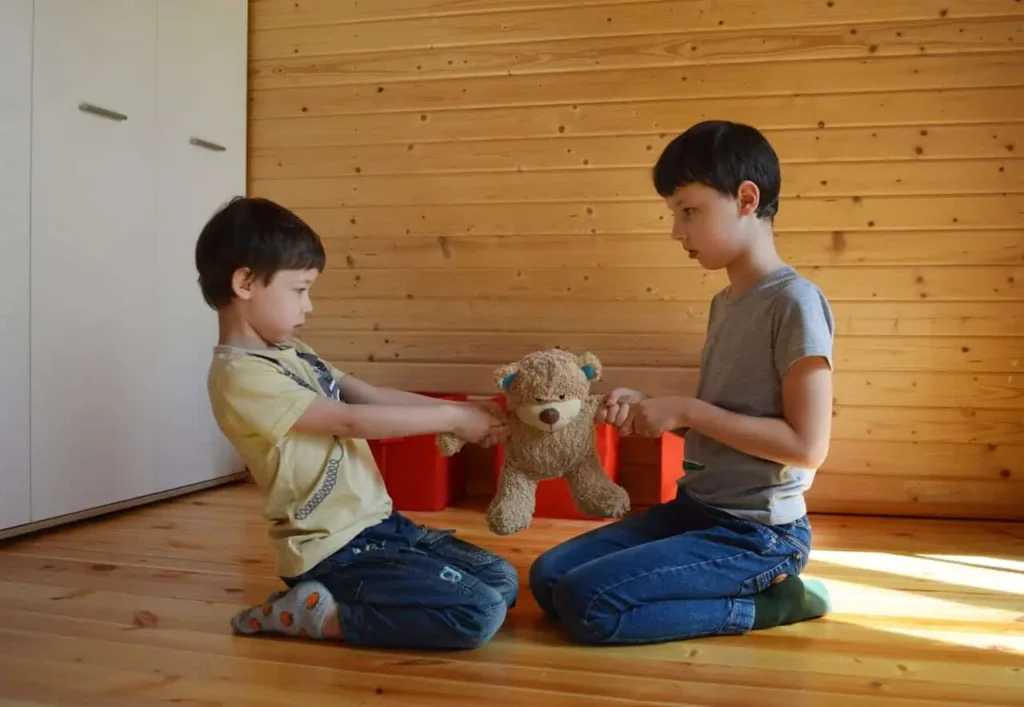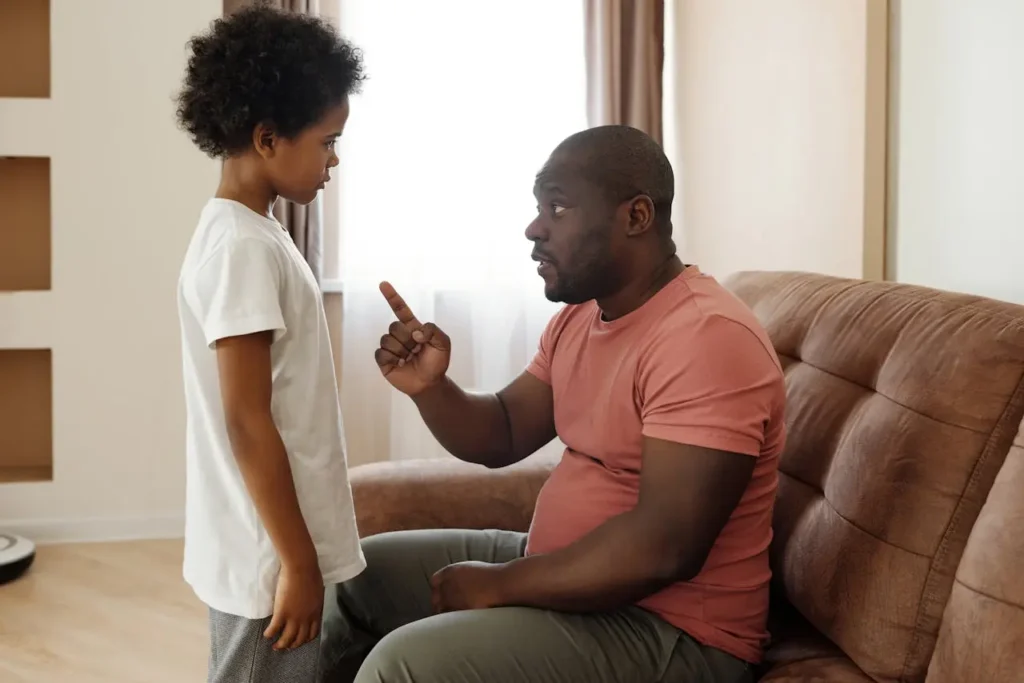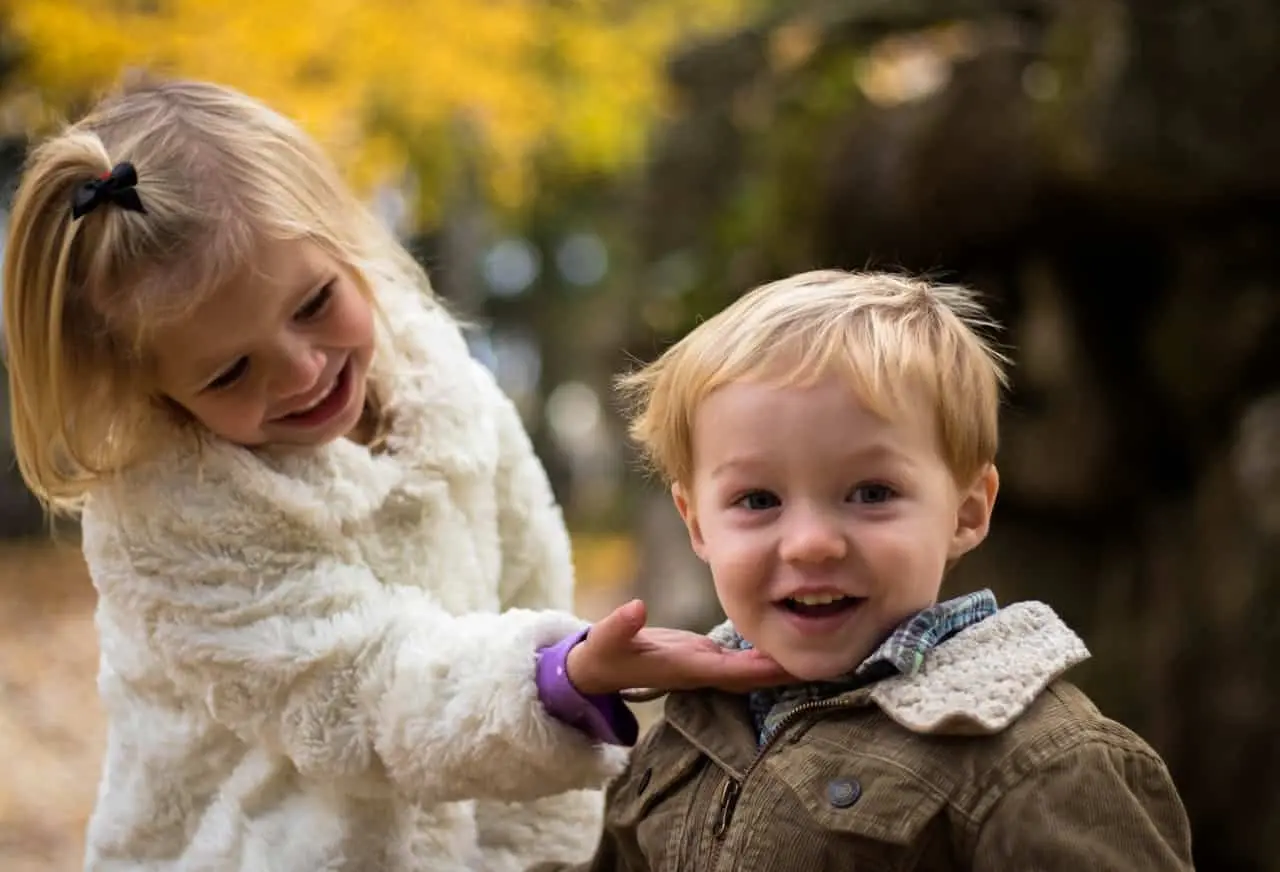Conflicts are a real part of human life; they are a fact, and we have to live by accepting this fact. So why not learn conflict resolution skills? Even in the daily lives of children, small quarrels are scattered, and they need conflict resolution skills.
Childhood is the best time to learn skills. As teachers or parents, it is our responsibility to equip our children with all the necessary life skills.
Having carefully reviewed all aspects of conflict resolution for kids, we have prepared for you a simple, easy-to-understand, and comprehensive article that provides you with all the information on this important life skill for your kids.
Real-life conflict scenarios for kids:

- I saw two children who wanted to play with the same toy at the same time. Now, there are two kids and one toy. And they both insist on playing first. The matter has stopped here. Yes, this is where conflict resolution skills come into play.
- I saw two siblings fighting over the control of the TV remote. The boy says I have to watch my favorite show, and the girl says I have to watch mine. There is a fight over this. And they both start shouting at each other. When will conflict resolution skills come into play?
- Have you ever noticed a group of friends sitting together at lunch? One friend accidentally knocks over another friend’s drink. The friend whose drink was spilled gets upset and demands an apology. The other friend feels it was just an accident and doesn’t think they should apologize. This is where the conflict erupts and a need for conflict resolution for kids arises.
- Imagine that during recess, children are standing in line, waiting for their turn to take the slide. One child repeatedly cuts the line and tries to get ahead of the others, which often leads to conflict. Conflict resolution skills can prevent conflict from escalating.
- During a game of tag, one child repeatedly breaks the rules by not counting properly or pretending they weren’t tagged when they were. This causes conflict as other kids feel cheated, and unfairness arises.
I have given only a few examples. And you can see that children need this essential skill at every point in their daily lives. Now you must have understood its importance.
Understanding Conflict Resolution for Kids
Disputes and disagreements are bound to arise, and in children, they arise even more. And they start arguing over small things. This is when it is easiest to practice this skill. And remember, practice is key to mastering any skill. So instead of growing up and practicing big fights, this is the time—the best time.
Once a conflict arises, we have two options. Either fight or resolve it with love and peace. Here, we will teach you how to use the latter of these two options skillfully.
For this, we will need three things. Do your calculations. Do you have these three things?
- How to communicate effectively.
- How to understand others’ perspectives.
- How to find mutually agreeable solutions.
Importance of teaching conflict resolution skills early
Teaching conflict resolution skills early in life is crucial, as it equips children with valuable tools for handling disputes in a healthy and constructive manner.
By instilling these skills from a young age, children can develop a positive attitude towards conflict, viewing it as an opportunity for growth and learning rather than a source of stress or discomfort.
Additionally, early intervention can help prevent conflicts from escalating into more significant issues and promote positive communication habits that last into adulthood.
Conflict Resolution Skills for Kids
Conflict resolution skills build on many other skills, and then they provide the foundation for many more skills. This means that by mastering this one skill, many essential life skills are acquired automatically.
Here, we’ll explore some fundamental conflict resolution skills tailored to kids:
Active Listening:
Active listening is a skill in itself, and it takes practice and patience to develop. Unless we listen attentively and carefully to what someone is saying, how can we understand the hidden feelings and meanings behind the words?
Teach your children to:
- Pay attention to what others are saying
- Don’t interrupt when someone is talking
- Understand what the other person is saying and show empathy
- If there is a problem in understanding something, politely ask and clarify
Let your children know that misunderstanding can be a very basic cause of conflicts and that active listening skills close the door for misunderstandings to arise.
Empathy:
Empathy is an essential and powerful leadership quality that should be a part of every child’s personality. Parents should pay close attention to it. But unfortunately, either we are unable to understand its importance or act carelessly in this matter.
Teach your children the skill of understanding the emotions of others.
You certainly need your children to understand your emotions, but how will they understand when they don’t have the skills to understand emotions?
Helping kids develop empathy involves teaching them to recognize and understand others’ feelings and perspectives, which fosters compassion and promotes cooperative problem-solving.
Communication:
We can convey our words to the ears of others, but we must be skilled enough to convey our words to the hearts of others.
You have to teach your children to choose words according to the situation.
You have to teach your children to choose the tone according to the situation.
You also have to teach your children when it is appropriate for them to speak up and when to remain silent.
You also have to teach your children when it is more beneficial for them to speak up and when to keep quiet.
Effective communication skills enable children to express their thoughts, feelings and needs clearly and assertively while also actively listening to other’s viewpoints.
Problem-Solving:
Basically, these things are naturally buried somewhere in our children’s brains; it’s our responsibility how we help them dig them out.
Encouraging children to work together to find solutions to conflicts promotes critical thinking, collaboration, and creativity, fostering a sense of empowerment and mutual respect.
Confidence and Resilience:
These are very important elements for succeeding in life, and they only come with knowledge about something.
If children learn to resolve their conflicts with love, peace, and tranquility, they can bring strength to their relationships and become reliable in their friendships. And can make life beautiful.
The Role of Emotional Intelligence in Conflict Resolution
Emotional intelligence plays a crucial role in conflict resolution by helping children understand and manage their emotions effectively.
Here’s how emotional intelligence contributes to successful conflict resolution:
Self-awareness:
When we start to know ourselves, life decisions become easier for us. It’s just because we know our strengths and weaknesses, and we formulate our plan and action plan accordingly. Which proves to be more effective in our practical lives than otherwise. Therefore, it is very important for your children to understand themselves first.
Encourage them to recognize and understand their emotions. This will enable them to communicate their feelings more effectively and respond to conflicts calmly and rationally.
Self-regulation:
When you teach your children self-awareness, then comes the stage of self-regulation. Self-awareness and self-regulation are two similar things, and they support each other.
Teaching kids strategies for managing their emotions, such as deep breathing or taking a break when feeling overwhelmed, enables them to approach conflicts with a clear and focused mind.
Social Skills:
Building social skills, such as effective communication and cooperation, enables children to navigate conflicts with peers and collaborate on finding mutually beneficial solutions.
We have a complete and comprehensive article on the topic of social skills. You can benefit from it.
By fostering emotional intelligence in children, we equip them with the tools they need to handle conflicts constructively, build positive relationships, and thrive in various social settings.
Strategies for Resolving Conflicts
Effective conflict resolution strategies empower children to resolve conflicts in a calm and constructive manner. Here are some practical strategies to help children resolve conflicts:
1. Win-Win Negotiation:
It is a solution in which everyone is satisfied and everyone benefits. So doesn’t it take some skill to find such a solution? There may be many solutions to a problem, but finding a specific and optimal solution is a skill in itself and can be a precursor to many other skills in children.
2. Compromise:
Teach your children how to replace ego with humility. Because if the kite is to fly high, the thread has to be loosened. Encourage them to bend, because you have heard that the branch of the tree that bends bears fruit.
If relationships can be saved by taking a step back, what’s the harm in that? If your children start understanding these things, many of the main reasons for conflicts will disappear automatically.
3. Seeking Adult Help:
Children may be reluctant to tell family members or share the truth about conflicts, but you have to lovingly explain that it is only for them to benefit, and there is nothing wrong with sharing.
You have to establish a friendly relationship with them based on trust and credibility and make them believe that they can share and ask for help from a senior whenever the conflicts escalate or become too difficult to resolve independently.
4. Taking breaks:
Explain to your children that when the human brain is in a state of anger, many parts of it stop working. Which affects a person’s ability to make decisions and creates a state of haste. A person is unable to understand whether it is better to speak or to remain silent in this situation. So, he does not even understand what kind of words to choose on which occasion.
So whenever a conflict situation arises, first of all, control your emotions, restore your breathing, normalize your heart rate, relax your body and muscles and take long breaths. Do not think about the solution to this conflict until you are completely calm, because then whatever you think about will not be beneficial.
Related article: 33 Focused Self-care Activities
Tips for Teaching Teens Conflict Resolution Skills

Teaching conflict resolution skills to teenagers requires a tailored approach that addresses their unique developmental needs and challenges. Here are some tips for effectively teaching conflict resolution to teens:
1. Teaching Resilience:
Did you know that resilience is linked to children’s emotional well-being and success in life, among other things?
Obviously, conflicts are unpleasant experiences in life, but they result in pleasant and vital life skills. That enables children to cope with the many challenges of life ahead. This is one of the great reasons for developing the inner potential of children.
Alongside conflict resolution skills, it’s essential to teach children resilience. Encourage them to view conflicts as learning opportunities and to develop coping strategies for handling difficult situations.
2. Addressing Bullying Behavior:
Conflicts and bullying behavior are two different things. Educate children on the differences and empower them to recognize and raise their voices against bullying behavior appropriately.
Promote empathy and assertiveness in standing up against bullying. You should also focus on providing your children with a supportive and inclusive environment.
3. Encouraging Positive Peer Relationships:
Peer relationships play a significant role in children’s social development. To be social, you have to teach your kids and teens to adopt social values and social norms. Tell them that you cannot become social by being lost in yourself; people who become social prefer others to themselves.
Instead of benefiting themselves in everything, they also realize and care for the benefit of others. It is an excellent and fundamental component of leadership qualities.
Encourage positive peer interactions by facilitating opportunities for collaboration, teamwork, and mutual respect. Promote empathy, kindness, and inclusivity within peer groups to foster a supportive social environment.
4. Incorporating Conflict Resolution into Education:
School is not only a place where children learn how to read and write. This is the place where they learn communication skills, they learn social skills, they learn how to respect others, they learn how to overcome various difficulties in life.
Thus, in the school setting, children can effectively learn conflict resolution skills.
If we consider integrating conflict resolution education into school curricula and extracurricular activities. Then it will become easy to provide resources, training, and support for teachers to teach conflict resolution skills effectively.
The thing needed most in today’s life is to understand the importance of these personality development skills and create a school culture that values empathy, communication, and problem-solving as essential life skills.
5. Parental Involvement and Modeling:
f you invest any effort in your children in any sense, then the result will definitely come. If you do not get your own desired output, don’t worry; you will get it from another form.
You must model positive conflict resolution behaviors in your own interactions, and then they also need your guidance and support whenever they encounter conflicts.
Are you what you want your children to be? If you are not, then you have to be like that and show it to them. This will make their learning process surprisingly easy.
You have to give them such examples, you have to tell them such stories, and you have to provide them with open communication, active listening, and empathy within the family.
And you have to make them practice. Then you will see how beautifully their personalities will grow in the future. And I assure you that you will definitely be happy to see their well-groomed personalities.
6. Recognize Their Autonomy:
As children grow older, they start developing a sense of sensibility and a sense of responsibility. You have to respect this and sometimes accompany them in the decision-making process related to their conflicts.
When you understand and respect their increasing independence as they grow, this will further strengthen their sense of responsibility. This includes informing them about how conflicts are resolved.
Instead of just telling them what to do, encourage them to take responsibility for their actions and choices. This approach empowers children to become more self-reliant and teaches them valuable problem-solving skills.
7. Peer Group Discussions:
Children learn a lot from their classmates, from their friends, and from their peers. What they see doing and listening to what they say leaves a deep impression on their minds.
Take care of children, what kind of friendships they adopt, and what kind of company they hang out with. Regularly facilitate them to meet and spend time with good friends.
Facilitate discussions within peer groups or support networks where teens can share their experiences with conflicts, offer advice, and learn from one another. Encourage them to reflect on their conflict resolution strategies and consider alternative approaches.
By implementing these tips, parents, educators, and mentors can support teens in developing essential conflict-resolution skills that will serve them well throughout their lives.
Conflict Resolution Activities for Kids
Engaging children in interactive activities is an effective way to teach and reinforce conflict resolution skills in a fun and engaging manner.
These activities simplify the process of resolving disputes or disagreements between individuals or groups peacefully and constructively.
The activities given in the following article are actually focused on helping teens learn how to find a specific solution for a specific problem that satisfies all parties involved.
Here is a complete and comprehensive article about conflict resolution activities for kids and teens.
Conflict Resolution Worksheets for Kids
Using worksheets is another effective way to reinforce conflict resolution skills and provide children with structured guidance in navigating conflicts. Here are some downloadable and printable conflict resolution worksheets for kids in PDF format:
1. Communication Skills Practice Sheet:
Click here to download Communication Skills Practice Sheet
2. Problem-Solving Flowchart:
Click here to download Problem-Solving Flowchart
3. Apology and Forgiveness Exercise:
Click here to download Apology and Forgiveness Exercise
4. Conflict Resolution Role-Play Script:
Click here to download Conflict Resolution Role-Play Script
By utilizing these worksheets, parents, teachers, and counselors can support children in developing essential conflict-resolution skills and promote positive social interactions and relationships.
Conclusion:
The social and emotional development of your children is closely related to conflict resolution skills.
First, teach your children that conflicts are an important part of life and will happen from time to time.
Pour this thought into their minds: that conflicts are actually opportunities that enable us to learn many life skills and prepare us to face life’s challenges with courage and bravery.
And second, tell them not to worry or panic if they do happen. But it is important to keep yourself calm, control your emotions, and explain how it is done. Teach your children the strategies and procedures for doing it. Create such an atmosphere within your family and inside your home. Show yourself to be like that and set an example in front of them.
By following the focused and specially designed activities and strategies I have mentioned above, like active listening, empathy, effective communication, and problem-solving, children can learn to resolve conflicts peacefully and maintain positive relationships with others. Additionally, fostering emotional intelligence and resilience equips children with the tools they need to handle conflicts constructively and bounce back from setbacks.
Thank you for joining us on this exploration of conflict resolution for kids. Together, let’s continue to foster environments where children can thrive socially and emotionally and contribute to a harmonious society.

2 thoughts on “Conflict resolution for kids (+ free printable worksheets)”